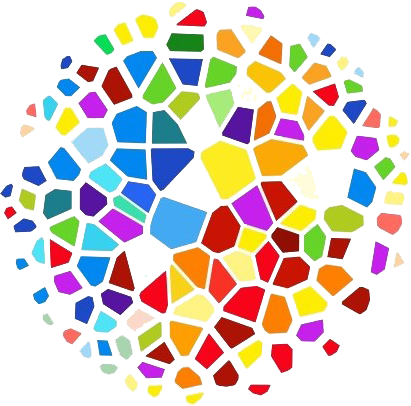Formula for Wayfinding?
In early March, I co-presented a workshop called Intuitive Wayfinding as a Mode of Knowing at a tech company in NYC. The room was full of software engineers who were curious about the concept of wayfinding. To give you a quick idea and save you the suspense, wayfinding is an intuition-based mode of knowing, where you “know as you go” (in contrast with analysis-based navigation, where you “know before you go”).
Let’s say you want to visit a friend. You have a starting address – point A, you know your friend’s address – point B, and you understand both the terrain and transportation options enough to figure out the best route from point A to point B. This trip is an example of navigation.
Sometimes, though, you just feel the urge to get out of the house. You are not sure where you want to go, or why, but you want to go. Getting into the car feels right, and you go for a ride. Somehow you end up by your friend’s house, and it feels like the right place for you to be at the moment. You have a drink with your friend, or tea, or a good conversation, or whatever else feels harmonious, and you feel more at peace; the anxiety that prompted you to leave your house is gone. This journey is an example of wayfinding.
To find a person, you can use navigation, relying on fact-based data such as a name, city, or date of birth. To connect with a person, you need wayfinding, relying on sensory-based data like vibe, feeling in sync, and sensitivity to unspoken needs. Ideally, people should possess both navigation and wayfinding skills, as they address different needs in our lives.
By definition, wayfinding implies “not knowing for sure”, recognizing as you go, figuring out as things evolve throughout your journey, and orienting toward your internal sense for what feels harmonious, physically, intellectually and emotionally, as you align with your goal. You may not even know what your goal is, but you feel it (or feel what it isn’t).
Throughout our lives, we are taught to solve problems using fact-based data and analysis-based approach, which is fantastically useful for well-structured problems like figuring out the area of a room. Today’s organizations operate in complex, volatile, turbulent environments, which often makes analysis-based navigation impossible. Intuition-based wayfinding then becomes a necessary alternative. In today’s business environment, if you wait until you “know everything before you go”, you may miss the boat. Being a good wayfinder, being willing to “find out as you go”, may give you a competitive edge.
So, the key question is: How do you become a great wayfinder?
And this is where the trouble with wayfinding began for technical experts in our workshop. Question from the group: “Is there a formula for wayfinding?”
“Is there a formula for love? For happiness? For inner peace? For universal success? In short, NO. You have to go through the process of developing your senses, much like one develops a musical ear or grows muscles.” This was not a popular answer.
Another question: “Is there a reliable, for-sure, replicable way to teach and learn wayfinding?”
“No. Just as you cannot precisely replicate your buddy’s successful strategies for connecting with women, or Nobel Laureate’s approach to research, or use a dream dictionary where supposedly “seeing a moon in your dreams means XYZ” to everyone, you cannot be explicitly taught the tacit dimension of wayfinding. It takes Time, stories, metaphors, experimentation, and feedback from an expert and from environment.”
Needless to say, some workshop participants were disappointed to hear that ability to wayfind cannot be acquired like “instant soup” (preferably with a recipe that any chef can reproduce). Wayfinding is a non-algorithmic process; others can share with you how they do wayfinding, but you are unlikely to get the same result by copying them, as too many tacit factors are at play.
This is not the end of the bad news about mastering wayfinding. Not only there’s no formula for wayfinding, there’s a lack of vocabulary to help analytical thinkers grasp the nature of wayfinding. Technical solution experts and strategy experts speak different languages, so terms like “embody”, “bodyfulness”, “feels harmonious”, “sensory-based information” may mean very little to some analytical thinkers. And yet, learning to wayfind is an essential skill for making peace with today’s fast-paced unpredictable world.
So, let’s consider this article as just a beginning of our conversation on wayfinding.
Please, let me know if you want to talk about any of this (just reply to this newsletter or email me at Alina@AlinaBas.com). Also, if you’ve read all the way up to here, thank you for the gift of your attention. I’m thankful we are connected.


